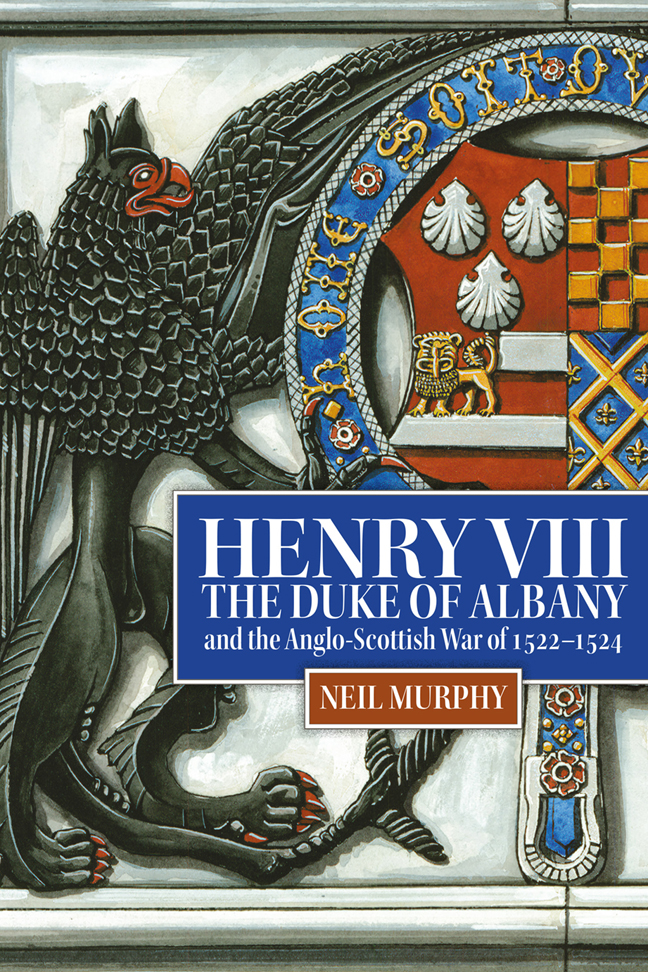Book contents
- Frontmatter
- Dedication
- Contents
- List of Maps
- Acknowledgements
- List of Abbreviations
- Glossary of Selected Scots Words and Terms
- Introduction
- 1 Albany's Return to Scotland to the Sack of Jedburgh (November 1521–September 1523)
- 2 Albany's March on Wark to the Treaty of Berwick (September 1523–January 1526)
- 3 Military Mobilisation in Scotland
- 4 The Supply of Scottish Armies
- 5 The Destruction of the Scottish Borders
- 6 The Defence of the English Frontier
- 7 Spies and Informers
- Conclusion
- Bibliography
- Index
5 - The Destruction of the Scottish Borders
Published online by Cambridge University Press: 10 January 2024
- Frontmatter
- Dedication
- Contents
- List of Maps
- Acknowledgements
- List of Abbreviations
- Glossary of Selected Scots Words and Terms
- Introduction
- 1 Albany's Return to Scotland to the Sack of Jedburgh (November 1521–September 1523)
- 2 Albany's March on Wark to the Treaty of Berwick (September 1523–January 1526)
- 3 Military Mobilisation in Scotland
- 4 The Supply of Scottish Armies
- 5 The Destruction of the Scottish Borders
- 6 The Defence of the English Frontier
- 7 Spies and Informers
- Conclusion
- Bibliography
- Index
Summary
The appointment of Thomas Howard, earl of Surrey, to the position of lieutenant-general of the king's army against Scotland in February 1523 led to an intensification of the war against Scotland. Whereas George Talbot, earl of Shrewsbury, lieutenant-general in the north in 1522, made no attacks on Scotland, Surrey launched a series of well-planned raids aimed at turning the most fertile parts of the Scottish borders into wastelands. Surrey was an expert in this type of warfare. Over the previous decade, he had burned crops and villages in France, Ireland and Scotland. Yet the degree of devastation he inflicted on Scotland in 1523 was unlike anything seen in the region since the fourteenth century, and it (along with his scorched-earth campaign in France in the previous year) marked the beginnings of a new intensity in the violence of Tudor warfare, which was increasingly directed against civilians. While the punitive raids that Thomas Dacre launched into Scotland in the wake of Flodden in 1513 were undoubtedly destructive, they lacked both the scope and the intensity of those of 1523, when Surrey destroyed the most fertile parts of the Scottish borders in an act of environcide, whereby the environmental structure of the borders was destroyed (crops and villages burned, animals taken or killed, food and seed stores despoiled) to depopulate the region by creating an artificial famine. In regions of principally arable farming, such as those specifically targeted by Surrey, the populations received the bulk of their calories from products derived from crops. This was not environmental destruction as a collateral damage of a conflict, but one where the destruction of the environmental infrastructure was the principal target of the campaign. Whereas during the Dutch Revolt, rebellious cities destroyed dykes to create a defensive waste to prevent the Spanish besieging them, this negatively affected their own populations. In contrast, Surrey's strategy was a double win because it both created a defensive waste and achieved it at the expense of the enemy Scots, rather than impact on English frontier populations.
Surrey had initially implemented these methods in north-eastern France in the previous year in a scorched-earth campaign that was so destructive that seventy years later peasants in the region still remembered 1522 as ‘the year of the great fires‘(l’année des grands feux’).
- Type
- Chapter
- Information
- Publisher: Boydell & BrewerPrint publication year: 2023

